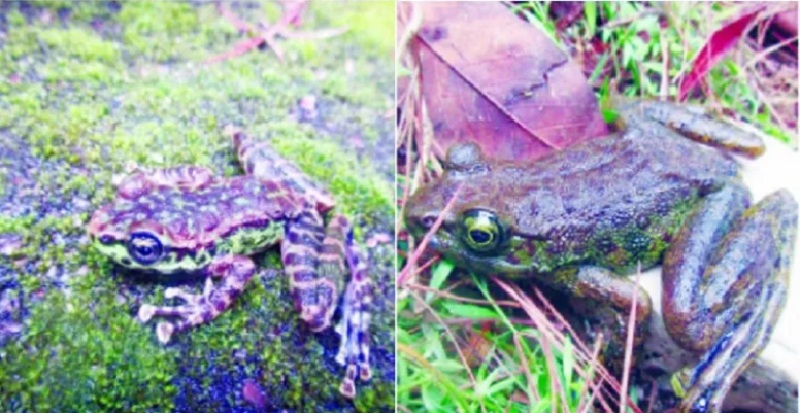Shillong: Researchers from the Zoological Survey of India (ZSI) and their local collaborators have recorded a new species of cryptic, cascade-dwelling frog in the bustling city of Meghalaya’s Shillong at an average altitude of 4,990 ft.
The new frog species has been named Amolops shillong, or the Shillong cascade frog.
This remarkable find, published in the latest Records of the Zoological Survey of India, proves that even urban environments can harbor hidden natural treasures.
Unlike most new species found in remote jungles, Amolops shillong was discovered in well-known areas like Mawlai, quietly thriving in Shillong’s urban forest patches.
“The discovery of Amolops shillong from within Shillong’s urban landscape underscores the urgent need to integrate biodiversity conservation into city planning,” ZSI Director Dhriti Banerjee said.
“It is a striking reminder that cities are not ecological voids but can be living repositories of unique and sensitive species. Protecting microhabitats in urban forests, streams, and green corridors is essential not just for amphibians like Amolops shillong but for the overall health of our ecosystems,” she said.
While visually similar to other frogs, genetic analysis confirmed Amolops shillong is a distinct species.
Phylogenetic analysis revealed that Amolops siju, a species described by the same ZSI team in 2023 from the Siju Cave in Meghalaya’s South Garo Hills district, is the Shillong cascade frog’s closest relative, with a genetic divergence of 2-3.4%.
Frogs like Amolops shillong serve as vital indicators of healthy ecosystems. Their presence in Shillong suggests that certain parts of the city still maintain the environmental conditions necessary to support sensitive wildlife.
Three specimens of the new frog were collected between 2022 and 2023 by a team of six researchers.
The team includes ZSI’s Shillong-based Bhaskar Saikia and Bikramjit Sinha, and Pune-based A. Shabnam and K.P. Dinesh, Eugene Lyngkhoi of the North Eastern Hill University’s Department of Zoology, and Damepaia S.M. Pdah of Assam University’s Department of Earth Science.
Two were found in Umthlong, Mawlai by Damepaia Pdah from Assam University, and one from Umrynjah by Eugene Lyngkhoi, a PhD scholar from NEHU, Shillong.
The Amolops shillong exhibits distinctive morphological features, including differences in size, skin texture, and body proportions.
“We were quite surprised to find an unnamed cryptic species thriving in Shillong’s urban sprawl. It’s a powerful reminder of how much biodiversity remains undocumented—even in our cities,” Bhaskar Saikia, the lead author of the study, expressed his surprise, said.
ALSO READ: Meghalaya’s youngest ‘Nikshay Mitra’ joins fight against TB
The scientific team stressed the urgent need to document urban biodiversity, especially as rapid urbanization continues to encroach on green spaces.
India currently has 20 recognised species of Amolops frogs, 16 of which have been described from within the country. Nine of these have been recorded in the past two decades, emphasising the status of India’s northeastern region as a hotspot of amphibian diversity.















